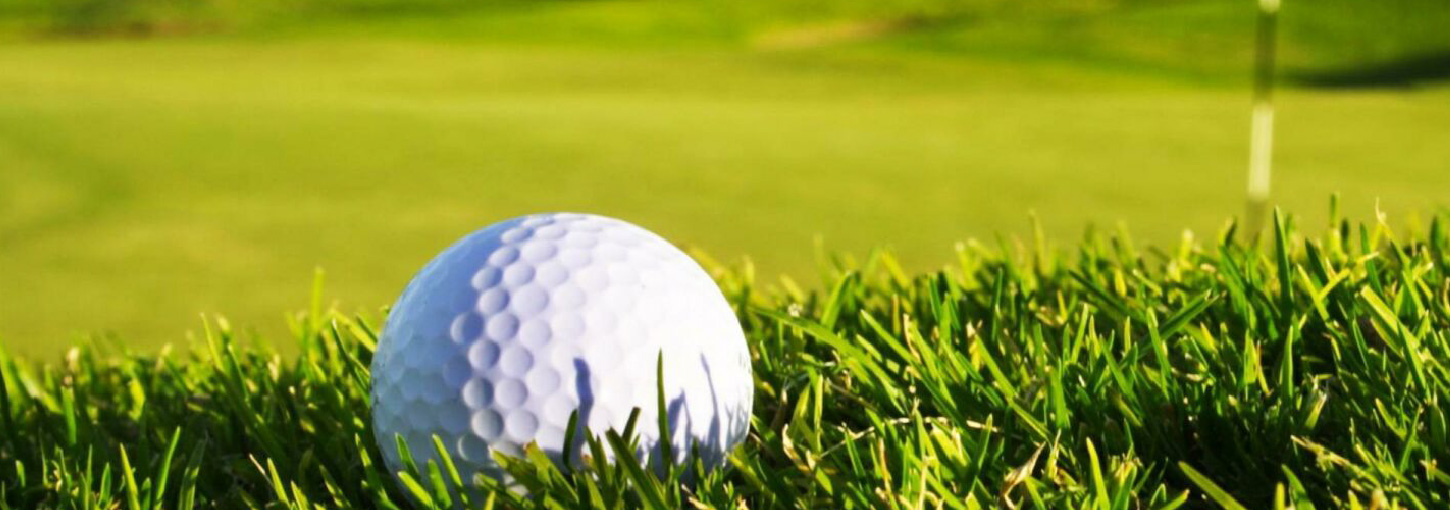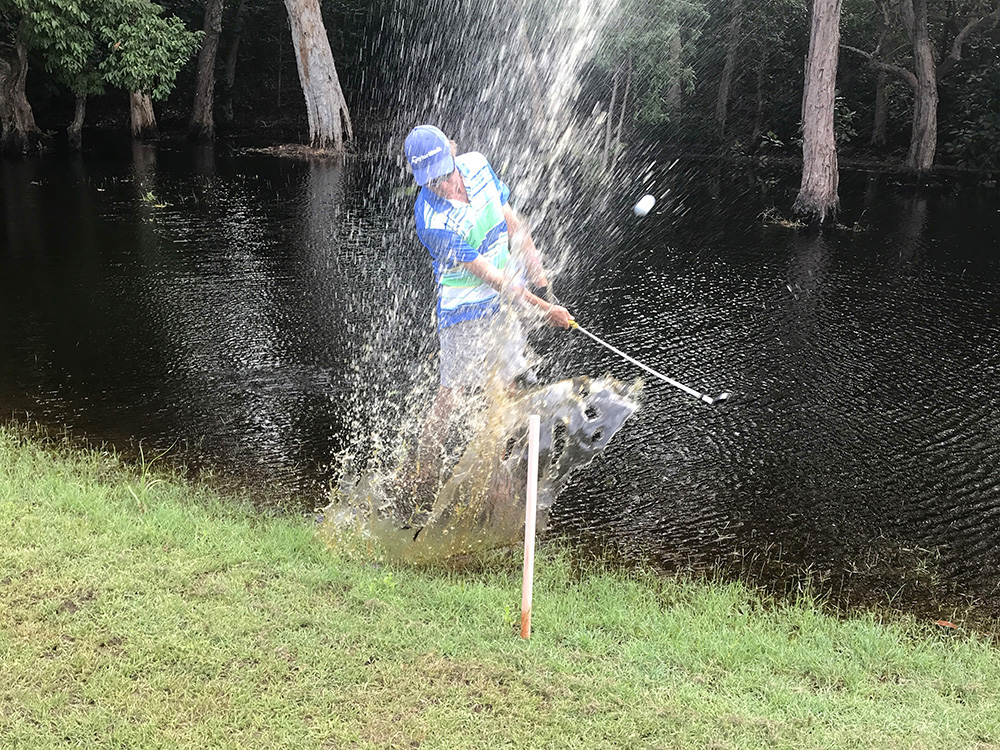Pro Tips

To make solid contact from uneven ground, don't fight the slope, adjust your setup and swing to accommodate it. Here are three changes you should make for every uneven lie you face.
1. Stand wider for extra stability.2. Lean into the slope; gravity will pull you downhill during the swing.
3. Don't swing hard: Go at 70 or 80 percent to keep your balance.
UPHILL
On an upslope, take a longer club because the upward angle of the hill tilts the club face back, adding loft, Play the ball slightly more forward than normal, and try to get your shoulders parallel to the hill. If your shoulders are too level, you'll stick the club head steeply into the ground at impact. Set up with the slope, and then swing up the slope.
You should also adjust your aim at address. Going uphill, you tend to hit the ball left because your hands and arms are releasing upward through impact, and that causes the club face to rotate closed. So aim your body and club right of where you normally would. Take less club, and play the ball back a little.
DOWNHILL
When playing from a downslope, take less club because the hill delofts the club face. Position the ball back a little and, as with the uphill lie, feel as if you set your shoulders parallel to the slope.(You might not actually be able to do this on a downslope, but that's the feel you want.) If you don't angle your shoulders, your body will be tilted back relative to the hill, and you'll likely hit behind the ball.
Shots from downhill lies tend to go to the right because you're extending your arms down the slope. In effect, you're holding off club face rotation, which can leave the face open at impact. But don't worry about releasing through the ball, just aim a little left to compensate.
BALL BELOW
The big challenge from this lie is getting down to the ball and staying there through impact. The tendency is to pull up or move onto your toes, both of which lead to poor contact. You really have to squat down and lean your rear end into the slope to lower your centre of gravity; your weight should be on your heels.
Because of this awkward squat position, body turn during the swing is restricted, so it's more of a hands-and-arms motion. The key swing thought is, maintain the flex in your knees; that will help you stay in your posture. Still, your swing will tend to be more up and down, which means less club face rotation, so aim left to guard against missing to the right.
BALL ABOVE
This lie brings the ball closer to you, so you naturally stand a little taller. Grip down inch or two to accommodate the shorter reach to the ball. Set your weight a little more in your toes; remember, gravity will pull you downhill—in this case, onto your heels.
From this upright posture, the swing will be flatter or more around the body. That creates more hand and arm rotation through the shot, with the club face closing at a faster rate on the downswing. So the tendency with the ball above your feet is to hit it to the left. Aim right to allow for that.
PLAYING THE WIND
Into The Breeze: Fight the urge to swing harder; an easier swing will keep the ball down.
The players who get it done in the wind are the ones who don't try to fight it. They don't swing harder or moan about bad luck. They focus on hitting the ball solidly, because a solid shot will fly true in a pretty stiff breeze, but a weak shot is hopeless.
Let's focus on playing into the wind, because that's the shot that gets most golfers. Obviously, you want to keep the ball low to neutralise the conditions. Best advice? Take a couple extra clubs, and swing at 75 percent. Fast swings create more backspin and send the ball higher, so resist the urge to smash it.
Play the ball an inch farther back than normal in your stance, and squat a little at address for stability. Then make a three-quarter swing, and try to stay more "on top of" the ball. Feel like your nose is ahead of the ball at impact, and your right hip and shoulder stay high through the strike. You're hitting down on it, trapping it against the turf.
Last point: Wind in your face will exaggerate any curve. If you play a draw or fade, give the ball more room to turn. But don't forget the main ingredient : Take more club, and go easier.
WET SEASON

The 8th hole in full wet season mode, from February to April the low lying areas around the course usually fill with water and the lily pads go into full bloom, and it’s croc free... most of the time. Here a player attempts to reach the green from the penalty area.